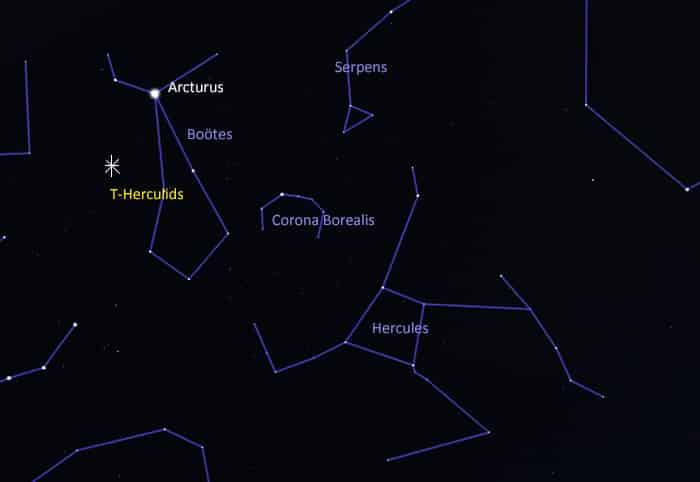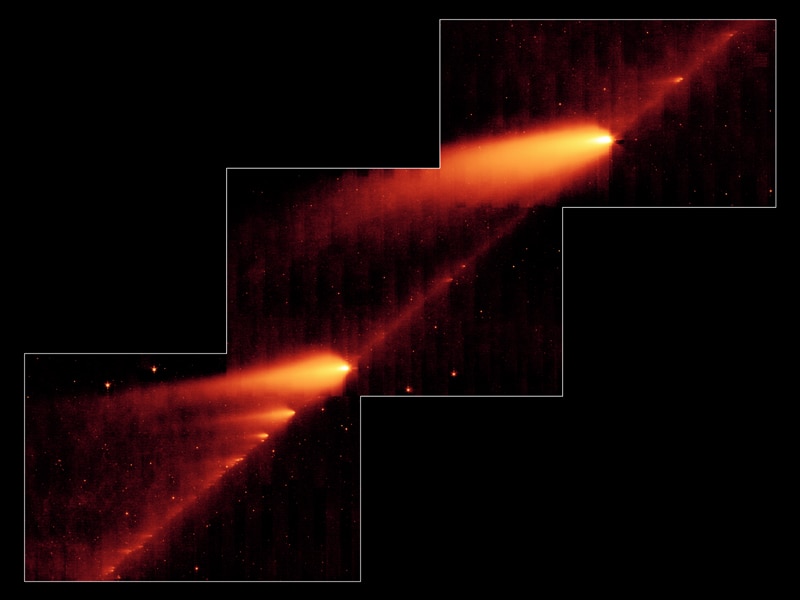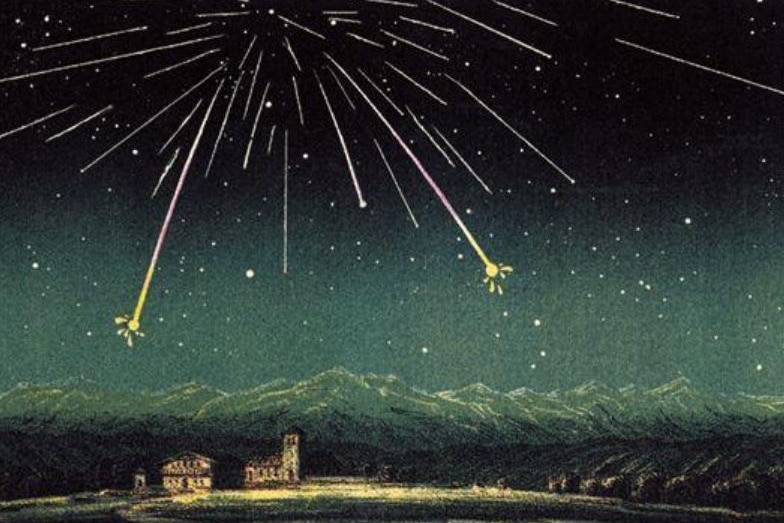If the predictions are correct, some places on Earth will see an intense meteor storm later this month.
A burst of the annual Tau Herculids shower is expected to last about an hour on May 30 or 31 (the date depends on where in the world you live).
It could fill the sky with shooting stars, or it could be complete and utter fizz.
But either way, it will be exciting for astronomers like Jonti Horner of the University of Southern Queensland.
“Even if this doesn’t lead to a big storm itself, it means that the next time we have a big storm, we’ll be able to predict it much, much better because of what we’ve learned from this.”
So what is the Tau Herculid meteor shower? And where is the best place in the world to see it (if it happens at all)?
Not normally something to write at home.
The Tau Herculids is not new, but it is a very small shower.
Every year, Earth moves through the debris stream of a small comet called 73P/Schwassmann-Wachmann 3, or SW3 for short.
SW3, which was discovered in the 1930s, orbits the Sun every 5.4 years, leaving a trail of debris behind it.
When it was first discovered, astronomers predicted that we should see meteors coming from a point near the star Tau Herculis in the constellation Hercules, which gives it its name.

Fast-forward 90 years and the radiant point has shifted to the neighboring constellation of Bootes thanks to SW3’s regular close encounters with Jupiter, which have altered the comet’s orbit over time.
The best meteor showers, like the Geminids, can produce up to 50 meteors per hour (depending on where you are in the world).
But Tau Herculids are generally barely worth a mention on the list of showers to watch because we’ve only seen a handful of meteors since the comet was discovered.
“Most of the time it’s really quite rubbish, but there is a chance for something special this year,” said Professor Horner.
If the predictions are correct, the Tau Herculids could increase much more than we normally see, even in the best rains.
So what has changed?
Disintegrating comet cloud
For the first time, Earth can find the tip of a thin, javelin-shaped debris filament deposited in 1995, when SW3 split.
“In 1995, when the parent of this meteor shower disintegrated, we saw more than 70 large pieces and a lot of dust and debris,” said Professor Horner.
“And in the years since, we’ve continued to see it fall apart.”

But whether the encounter will be spectacular, more or less, or just not happen at all, depends on the geometry.
“We are coming very close to the end of the dust javelin that was launched in 1995 and the question of whether or not we will see anything depends on how long that spear is,” said Professor Horner.
That will depend on how fast the dust travels.
Instead of passing through the cometary debris at a steep angle, Earth brushes against the edge of the comet’s orbit like the smooth merger of cars on a highway traveling at the same speed.
That means Tau Herculid meteors generally move very slowly, at about 10 miles per second, and aren’t very bright.
“If the debris was released at the normal speed comets release debris when they travel around the Sun, the javelin will be too short to reach us,” said Professor Horner.
“But why [the comet break-up] It was such a violent event…there’s a possibility that some of that dust may have been released faster than normal.”
“If it was fast enough and we can get hit by a lot of dust, it means we could see a meteor storm.”
If not, the next major Tau Herculid storm isn’t predicted to happen until 2049, and meteor rates may be lower as the dust spreads over time.
Meteor showers and storms
Meteor storms can produce more than 1,000 meteors per hour if you live in a place where the radiant point is directly overhead.
In 1872 and 1885 “the stars fell like rain” as the Earth passed through a stream of debris left by a comet that disintegrated in 1846.

The event, known as the Andromemid or Bielid meteor storm, produced thousands of meteors per hour, but hasn’t been seen since 1885.
Another Northern Hemisphere meteor shower known as the Leonids has reached storm level several times in the last 200 years.
One of the most spectacular occurred in 1966, when thousands of meteors per minute fell through Earth’s atmosphere during a 15-minute storm.
The last Leonid meteor storm occurred in 2002.
It’s thanks to the regular outbursts of the Leonids that astronomers are getting pretty good at predicting when new meteor showers and storms will occur.
Last year they accurately predicted a new shower known as the Finlayids.
So who will be able to see it?
Unless the time of the prediction is very far away, it is unlikely that we will see the storm Tau Herculid from Australia.
It is expected to peak around 3pm (AEST) on May 31.
Not only is it daytime in Australia, but the constellations from which the meteors radiate will be below the horizon at that time.
But the peak will be visible in North America and parts of South America and the Pacific (further north, better rates), where it’s still night.
“It’s perfect for Baja California because at that time [11pm May 30 PDT]the radiant will be almost up,” said Professor Horner.
And because it happens during the new moon phase, the night sky will be dark.
Although Australia will almost certainly miss out on the main event, Professor Horner said there is a very remote chance that people living in the eastern half of the country may still be lucky enough to spot a meteor over the north-eastern horizon an hour or so later. or less later. sunset on May 31.
The further north you are, the higher the radiant will be above the horizon.
“Don’t make any special plans to go out, but if you’re out, keep your eyes peeled,” he said.
“If we lose [the peak] for a couple of hours and it’s really spectacular, then we may still be in the descent state and we may still see some at sunset and not long after.
“The meteors will be revealing, they will be moving incredibly slowly compared to normal shooting stars.”
It may also be possible to catch a rare meteorite from dust trails established before 1995.
“There are probably streams from previous passes of the comet around the Sun, and if it was preparing to fall apart, it could be more active than we think,” said Professor Horner.
Reference-www.abc.net.au